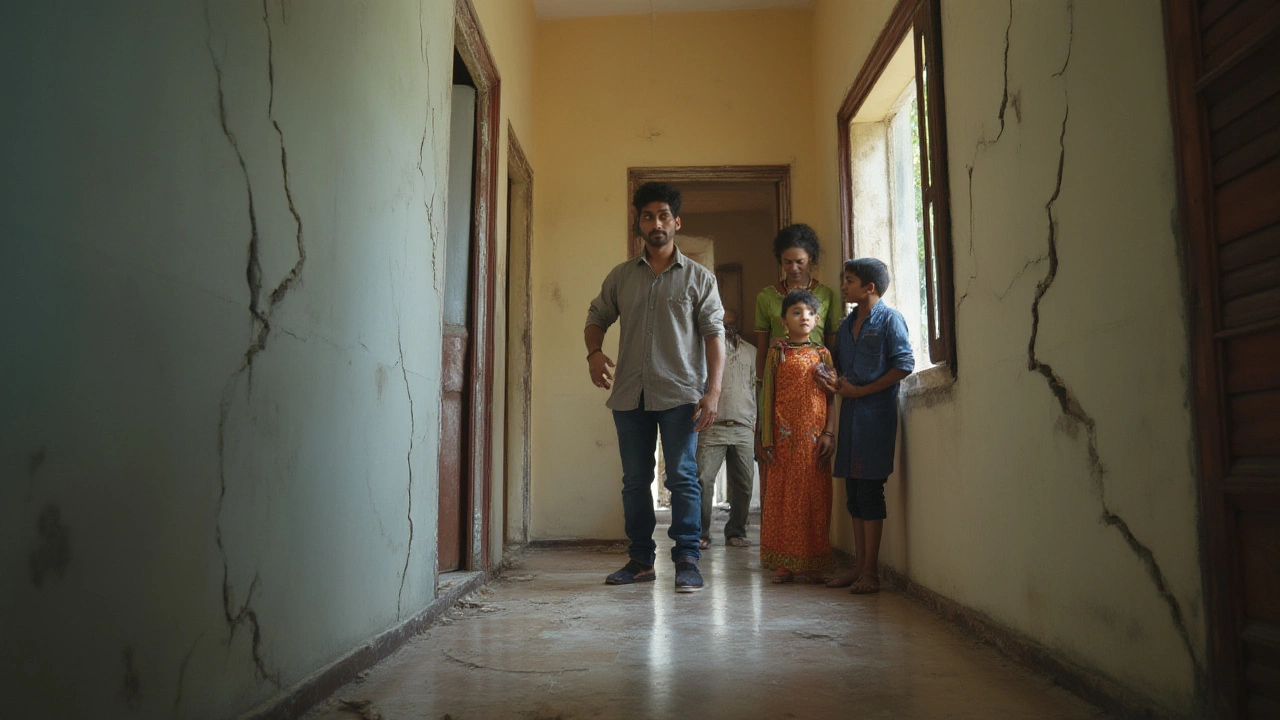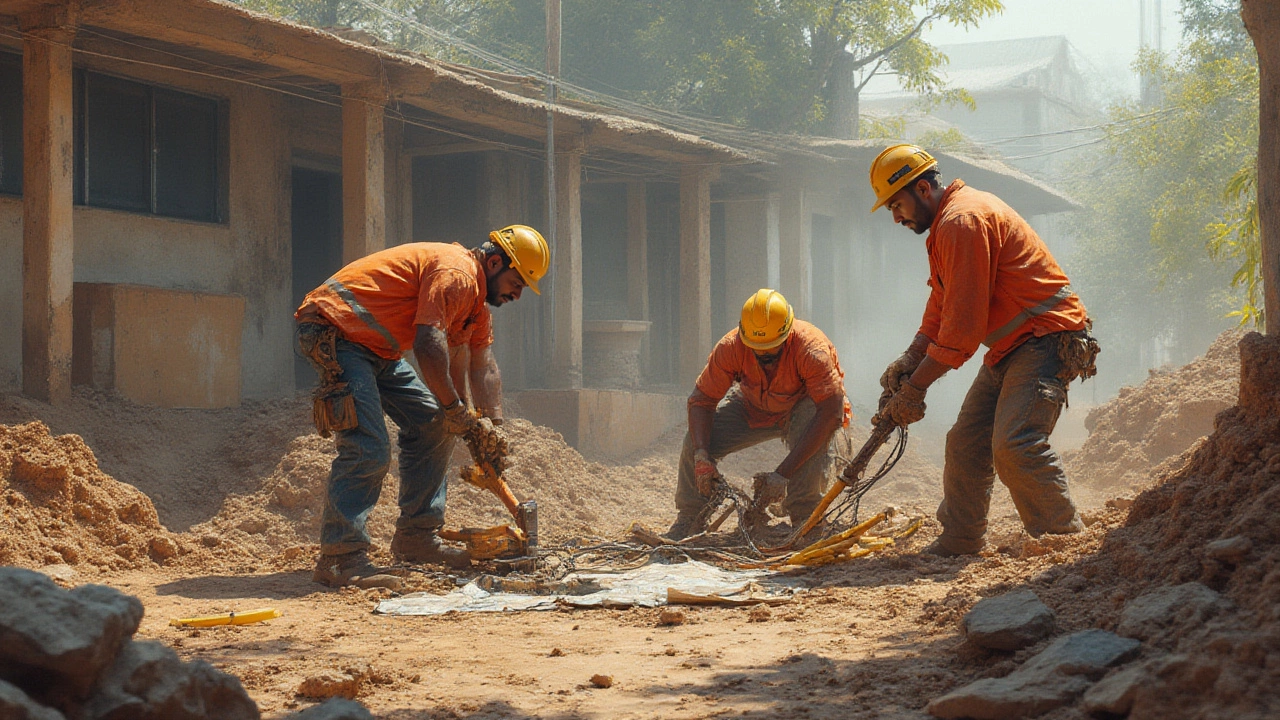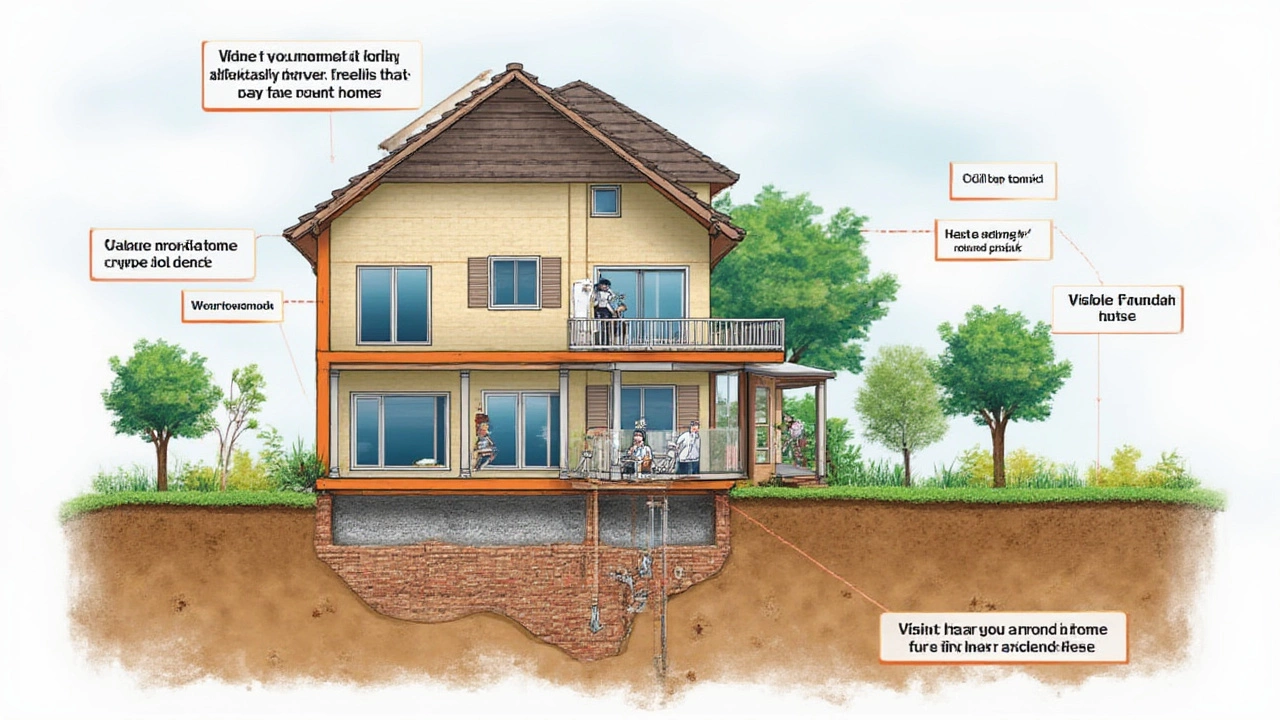How to Fix a Sinking Foundation: Practical Solutions for Homeowners

Imagine waking up one morning to find your floors sloping, your doors jamming, or a nasty crack snaking up your living room wall. That sinking feeling in your stomach often means what it sounds like—your home’s foundation is on the move. In the UK alone, insurance companies field thousands of subsidence and settlement claims every year, mostly tied to shifting foundations. Whether you own a rambling Victorian in Chorlton or a new-build on the edge of town, no house is immune. The real question is: what do you do when the ground beneath you starts to give?
Why Foundations Sink: The Not-So-Obvious Culprits
Too often, people think a sinking foundation is bad luck or just “old house problems.” There’s always a reason behind it, though. The most common villain is water—too much of it, or not enough. Here in Manchester, all that rain gets a lot of blame, but during a hot, dry spell, the clay-heavy soils can shrink as they dry out. This shrinking leaves gaps under your foundation, and gravity does the rest. To toss in a quirky fact: the Insurance Bureau of the UK once reported that summers with rare heatwaves cause a 400% spike in subsidence claims compared to average years.
Tree roots are sneakier than you might think. A tall tree too close to your house drinks gallons from the soil every day, which means the ground shrinks on one side more than the other. The Royal Horticultural Society has warned homeowners how roots from popular urban trees like sycamores, poplars, and oaks can stretch out twice as far underground as you see above, sometimes 30 metres from the trunk. Couple this with leaking pipes under your property—the third big culprit—and you’ve got a recipe for trouble. Old clay drains or cracked pipes lose a little water into the ground each day, eroding soil in slow motion.
The age and build of your home play a part too. Houses built before the 1930s usually sit on shallow brick or stone foundations. Many of those old foundations barely reach 60cm below the earth, compared to modern homes where concrete stretches 1.2 metres or more. This means historic homes are more vulnerable to soil movement, frost, and all those thirsty roots. Poor compaction during construction doesn’t help either: if the builders weren’t careful tamping down the soil layers, empty pockets beneath your house are waiting to settle in the years ahead.
Let’s not forget nearby construction. Manchester’s booming with new apartment blocks these days, and deep excavation on one property can affect the water table and soil pressure for homes down the street. A study from the University of Leeds tracked postcode clusters where three or more homes developed cracks after a single large construction project. You rarely hear about it until someone’s kitchen extension starts looking more like the Leaning Tower of Pisa.
The signs are everywhere, once you know how to spot them: step-cracks in brickwork, floors that feel bouncy or dip in the middle, windows suddenly refusing to latch. You might even find gaps opening where walls meet ceilings, or outside pathways pulling away from the house. If you have any of these symptoms, it’s not a day to shrug and hope for the best. Early action can mean the difference between an inexpensive fix and a full-blown rebuild.

How to Diagnose and Assess Sinking Foundations
It’s one thing to spot a crack, but another to figure out if your house is truly sinking—or if it’s just normal settling. Old homes move and shift a little as the years go by. But when you start seeing wider cracks (think more than 3mm), fresh gaps around windows and doors, or if you can roll a marble from one side of the room to the other, it’s time for a closer look. A key fact: the Association of British Insurers notes that hairline cracks smaller than a 10p coin (about 1.5mm) often aren’t serious, but larger or growing cracks suggest active movement below ground.
Don’t waste money guessing—get a structural engineer out. These folks are trained to spot the subtle clues, and they know how to use a range of tests. Expect them to poke, prod, and perhaps use a level to measure just how far things have tilted. They may recommend digging a trial pit beside your foundation to see what you’re actually sitting on, and these holes reveal whether you’ve got modern concrete or crumbling old brick down there. Usually, the professional will use a crack monitor—a clever little gauge fixed across a crack that tells if it’s moving or stable over several weeks.
Here’s a simple tip while you wait for the pros: take date-stamped photos of any major cracks and measure them monthly with a ruler or caliper. This record helps the engineer diagnose whether your house is still sinking. If you notice rapid widening, it’s a big red flag.
Aside from visual checks, new tech like ground-penetrating radar or resistivity meters can show voids or water movement in the soil. Ground movement patterns sometimes show up in unexpected places, like tilting garden walls at the boundaries of your property, or in the way outside steps pull away from their original position. Even sounds matter—creaks, groans, and pops can point to new stresses on the structure.
Insurers get involved if you suspect subsidence. They’ll send their own surveyor, and most policies cover investigation and repairs as long as you act quickly. A heads-up: they often want “evidence of recent movement,” so keep your photos and notes to hand.
Have a look at the handy stats below. They’ll help you know how worried you should be if you spot certain clues around your home:
| Sign | Severity | Typical Cause |
|---|---|---|
| Small diagonal cracks (under 2mm) | Low | Normal settlement |
| Stair-step cracks over 3mm in masonry | Medium | Possible subsidence/settlement |
| Windows/doors sticking or not latching | Medium | Shifting frame/foundation |
| Gaps between skirting/floor or ceiling/wall | Medium to High | Sinking or uneven foundation |
| Sloping floors (2cm+ over 2m span) | High | Significant movement, urgent assessment needed |
| Sudden appearance of multiple cracks after drought | High | Shrinking clay or tree roots |
| Bulging walls or separation from roof | Critical | Possible structural failure |
Being able to identify these signs early puts you ahead. Most people call too late, when the costs are eye-watering. Foundation work isn’t cheap, but knowing where you stand keeps you from being blindsided later. Next up: how do you actually sinking foundation without needing to move out or remortgage the house?

Proven Repair Methods: Fixing the Sinking Foundation for Good
This is where the solutions come in. No two sinking houses are exactly the same, so the fix always depends on where the trouble is, how extensive it’s gotten, and what sort of soil you’re dealing with. But there are a handful of repairs that engineers use again and again, each with its own strengths and weaknesses.
The classic repair for most foundations with ongoing settlement is underpinning. That’s just a fancy way of saying “give your house new feet.” Workers dig underneath parts of your existing foundation and pour in new concrete (usually up to 1m cubes) to create beefed-up support. These concrete ‘pins’ transfer the load of your house to deeper, more stable soil. In the UK, underpinning a typical three-bedroom semi can cost anywhere from £10,000 to £30,000, depending on how much needs doing and what gets unearthed down there. The upside? It usually stops all further movement and lasts the life of the house, barring another drought or leak.
Helical piers are another tool in the kit. These are giant steel screws drilled deep below your house until they bite into solid ground. A bracket then connects the pier top to your foundation, and the load of the home is shifted onto these new supports. Helical piers can be installed in a matter of days and are perfect if you don’t want your whole garden being dug up. One thing to keep in mind: they work best in softer soils, or in places with high groundwater. If you live somewhere with rocky Manchester subsoil, concrete pins may be more reliable.
Mini-piling is a high-tech fix usually used for very deep foundations or in urban areas where space is tight. This involves drilling small-diameter steel piles (sometimes filled with grout for extra strength) down through any soft or made-up ground until you hit solid layers, sometimes as deep as 20 metres down. Most city centre renovations use mini-piles to shore up converted warehouses or townhouses where undermining is risky due to nearby buildings or tunnels. While pricey, mini-piles allow you to stabilise an entire block with minimal surface disturbance.
One interesting thing: in places where leaking pipes are the main problem, stopping the water can sometimes fix the issue without going near the foundation. A specialist will find and seal the leak, then monitor the cracks—if movement stops, underpinning might not be needed. In rare cases, “grouting” is used—a concrete mix pumped beneath smaller sections of the house to fill voids left by erosion. This works best for localised settlement, not widespread sagging.
If soil shrinkage from thirsty trees is at fault, sometimes you’ll need to take out, or at least prune, the offending roots. The catch: chopping a big tree next to your house can sometimes make things worse if the soil ‘re-inflates’ with water, so always consult an arborist and structural engineer first. They’ll often recommend root barriers or staged pruning so the soil changes slowly, without more cracks appearing.
Now, you might be wondering—can you ever DIY a sinking foundation? For tiny cracks or if the settlement happened ages ago and has stopped, patching walls and resealing gaps yourself might be enough. But for anything that’s still moving, always call in pros. Foundation repairs need serious insurance and specialist kit—the risks are too high to mess about. Some jobs, like slabjacking (pumping expanding foam under sunken patios or outbuildings), are sometimes DIY jobs, but never under your main house.
Your repairs will usually follow a pattern. It starts with monitoring—gauges on cracks, and soil testing. If movement is confirmed and active, the next step is excavation for underpinning or driving in piers or piles. Repairs end with careful backfilling and restoration: patching bricks, smoothing floors, repainting, and double-checking the pipes and drains for future leaks. After repairs, take fresh measurements and keep your records safe; if you ever sell, savvy buyers and solicitors will want proof the work was certified and guaranteed (most UK underpinning firms offer 10-25 year insurance-backed guarantees).
Here’s a breakdown of typical foundation repair methods, what they cost, and how quickly they work:
| Repair Method | Cost Range | Time to Complete | Typical Use Case |
|---|---|---|---|
| Traditional Underpinning | £10,000-£30,000 | 2-6 weeks | Most homes, severe settlement |
| Helical Piers | £8,000-£18,000 | 2-5 days | Softer soils, rapid fix |
| Mini-Piling | £12,000-£40,000 | 1-4 weeks | Urban homes, deep/awkward sites |
| Grouting/Resin Injection | £4,000-£12,000 | 1-3 days | Minor, localised voids only |
| Tree Root Removal | £500-£6,000 | 1-3 days | Trees/main culprit, careful staging |
| Pipe Repairs | £400-£2,000 | Hours to a day | Leaks causing local movement |
Couple of closing tips: Always get at least two opinions and quotes for repairs—dodgy firms or sales tactics have fleeced people before! Ask to see previous certification, insurance, and guarantee details. If you have pets like my dog Max, warn the crew early; work can be noisy and disruptive, and Max gets fussed when there are strangers in the house. Plan for temporary support of key walls or features if your kitchen or bath sits right above where work will happen—nothing ruins your day like a cracked sink or slipped tile that wasn’t budgeted for.
Finally, remember this: houses can and do move. But you don’t have to be a victim or a bystander—armed with the facts, a good survey, and the right repairs, you can put your home back on solid ground, and get back to worrying about the proper things in life, like whether Max has smuggled another slipper into the garden.
Write a comment